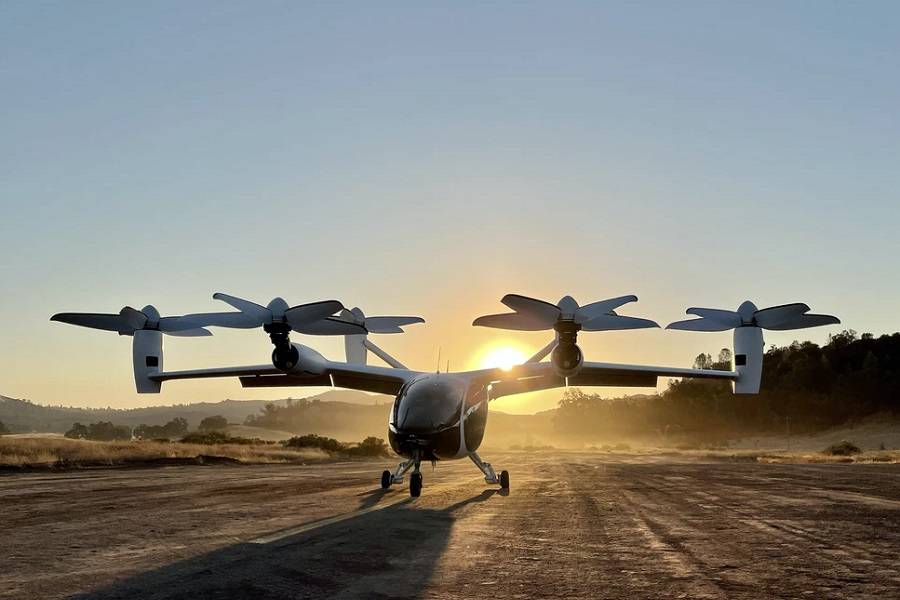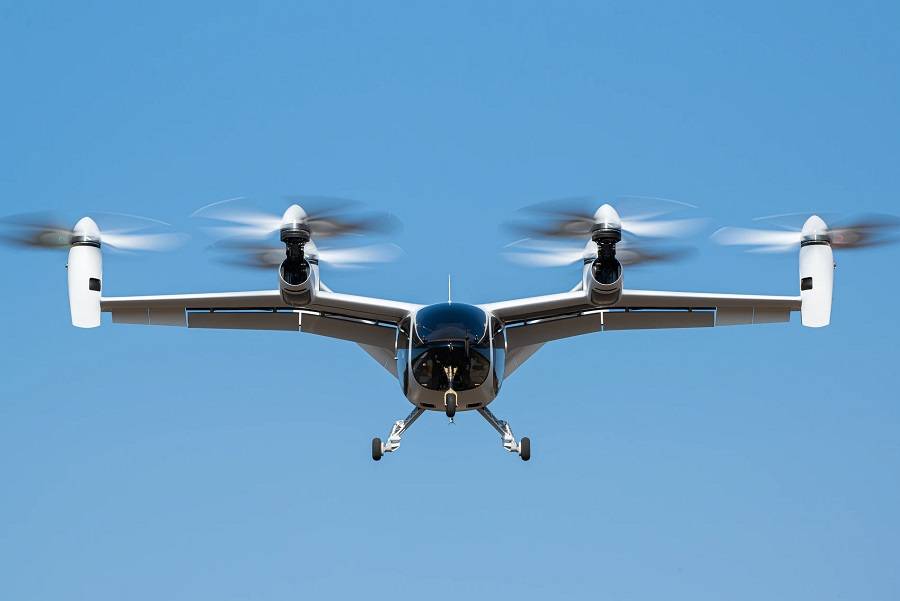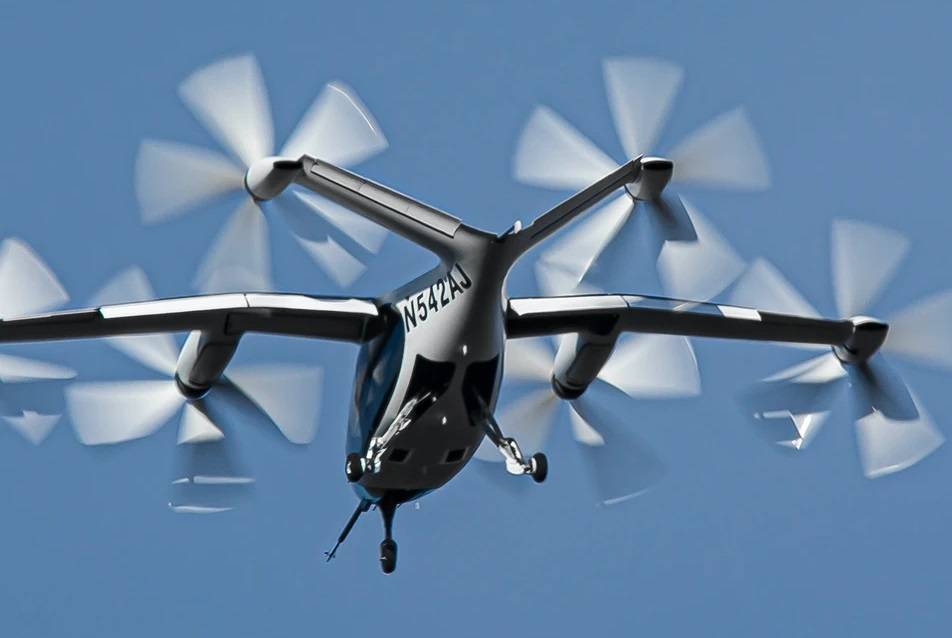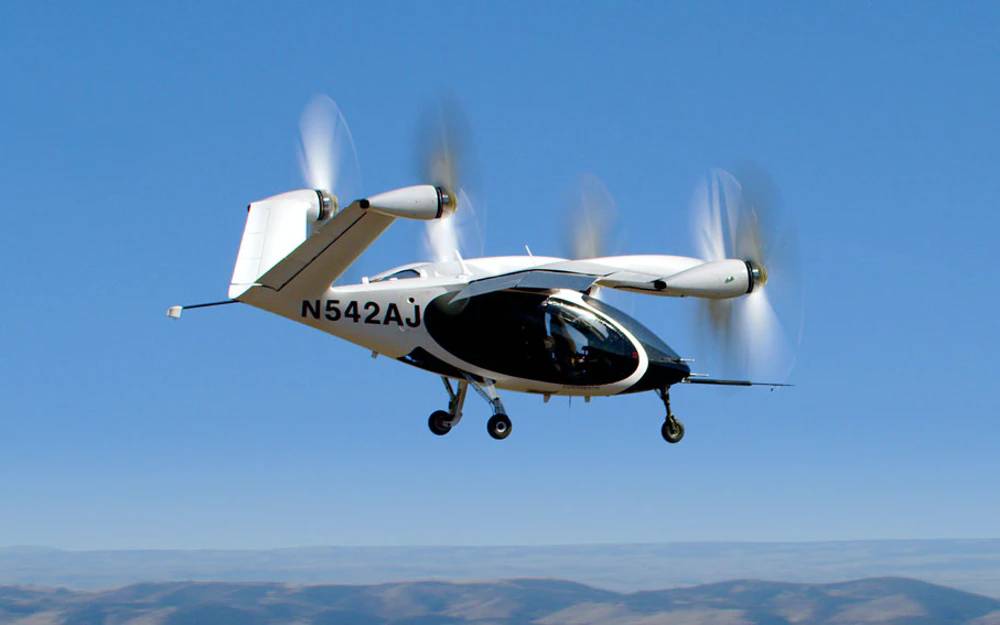Joby Aviation is working on a six-rotor eVTOL aircraft, that will operate as an air taxi. And they recently made some decisive new steps.
The company started in 2009, before the term ‘urban air mobility’ became known. Joby Aviation stayed under the radar for most of the time between then and now. But they were working on technologies at the component level: electric motors, flight control sofrware and of course batteries. Their aircraft had a unique set up, so they had their work cut out for them.

eVTOL (electric Vertical Take-Off and Landing) vehicles are, by their nature, somewhat unorthodox. And ‘tilt-rotor’ projects like Bell’s V-22 took substantial expenditure and several decades in development, to sort out. So naturally, there is a lot of skepticism around them – and anything looking like them. Joby Aviation did a lot of their early development behind closed doors, likely for this reason.
Of course technology in computing, electronics and software has advanced quite a bit since 1989. That’s when Bell began work on the V-22. Joby Aviation’s project had the benefit of that, plus some extra projects, to build experience. They took part in NASA’s LEAPTech project (that we will look into in another article). More recently (2018) they began partnership, including sponsorship from Toyota. And in 2019 they began working with Uber’s Elevate, before acquiring that project in 2020.

The company has backing from more investors. JetBlue is one of them, along with Tesla/SpaceX backer Capricorn Investment. And when Joby Aviation acquired Uber Elevate, Uber itself also became an investor. In all, the company has raised $820 million. And last month the company reportedly began exploring efforts to raise more capital through an IPO.
Joby Aviation’s Air-Taxi
NASA’s project was (and still is) about an electric urban air mobility or air-taxi concept. Joby Aviation eventually broke off, to pursue its own version of that project. Initially its design had 12 motors and propellers. With more development, its current design has half as many. In the form that will reach the market, the vehicle has a single pilot and a maximum of four passengers. It will be able to travel up to 150 miles (240km), doing 200mph (320km/h).

The company claims that the design is very quiet. This was part of why they reduced the number of rotors. Joby Aviation claims that its vehicle is ‘100 times quieter’ than a helicopter in a comparable role. The company intends to run its own air-taxi operation, with its vehicles. They believe that the price of such trips will be very competitive with ground services. And much cheaper than a helicopter ride.
We saw recently how Archer Aviation’s Maker eVTOL design integrates a fixed wing. This provides lift in horizontal flight. It also provides a level or redundancy, that not all eVTOL designs share. So if a fault means that several motors are inoperable, the aircraft should still be able to maintain controlled flight. Joby Aviation’s design also uses a wing and a V-shaped tail with control surfaces.

However unlike Archer’s Maker and many other designs, Joby Aviation has flown a full-scale prototype. And they followed that with a second, production prototype. Other models like the Lilium Air Taxi, have also flown full-scale. But the Lilium has not actually made a transition from vertical to horizontal flight, and back. Joby Aviation has amassed over 1000 hours in the air, with regular cycles between flight modes.
Certification
Joby Aviation have impressed the public, and a lot of key investors. However, they also need to impress the FAA. And given the unique nature of its aircraft and the eVTOL/tilt-rotor types of aircraft in general, this is more difficult than usual. So they had to sit down with the FAA and agree on not just a process, but a new standard.

The FAA and Joby Aviation agreed to a “G-1” certification basis for its eVTOL aircraft. The company intends to operate its aircraft commercially, from 2024. Even before this, the company worked with the US Air Force on the ‘Agility Prime’ programme. This is a military ‘flying car’ concept. And late in 2020, the USAF granted Joby Aviation’s vehicle a military airworthiness certification, for the Agility Prime program.
Joby Aviation describe the FAA’s certification process as follows:
“Joby’s aircraft will be certified in line with the FAA’s existing Part 23 requirements for Normal Category Airplanes, with special conditions introduced to address requirements specific to Joby’s unique aircraft. These special conditions, defined in the “G-1” document, are expected to be published in the US Federal Register in the coming months.”

There are a lot of challenges in getting such a new vehicle in the air. And there are even more, when trying to get paying passengers in it. Joby Aviation still has a long way to go. Some of their targets (like range) are fairly optimistic. However their air-taxi concept should work with less range, if necessary. They may be worth watching.
All pictures are by Joby Aviation



